Fellowship Programs
Research Presentations
2025 Presentations

Association Between Hypertensive Disorders and Neonatal Mortality Among Periviable Deliveries
The objective of this study is to determine the association between hypertensive disorders of pregnancy (HTNP) and 1- year survival among periviable neonates delivered at 22w0d-25w6d.
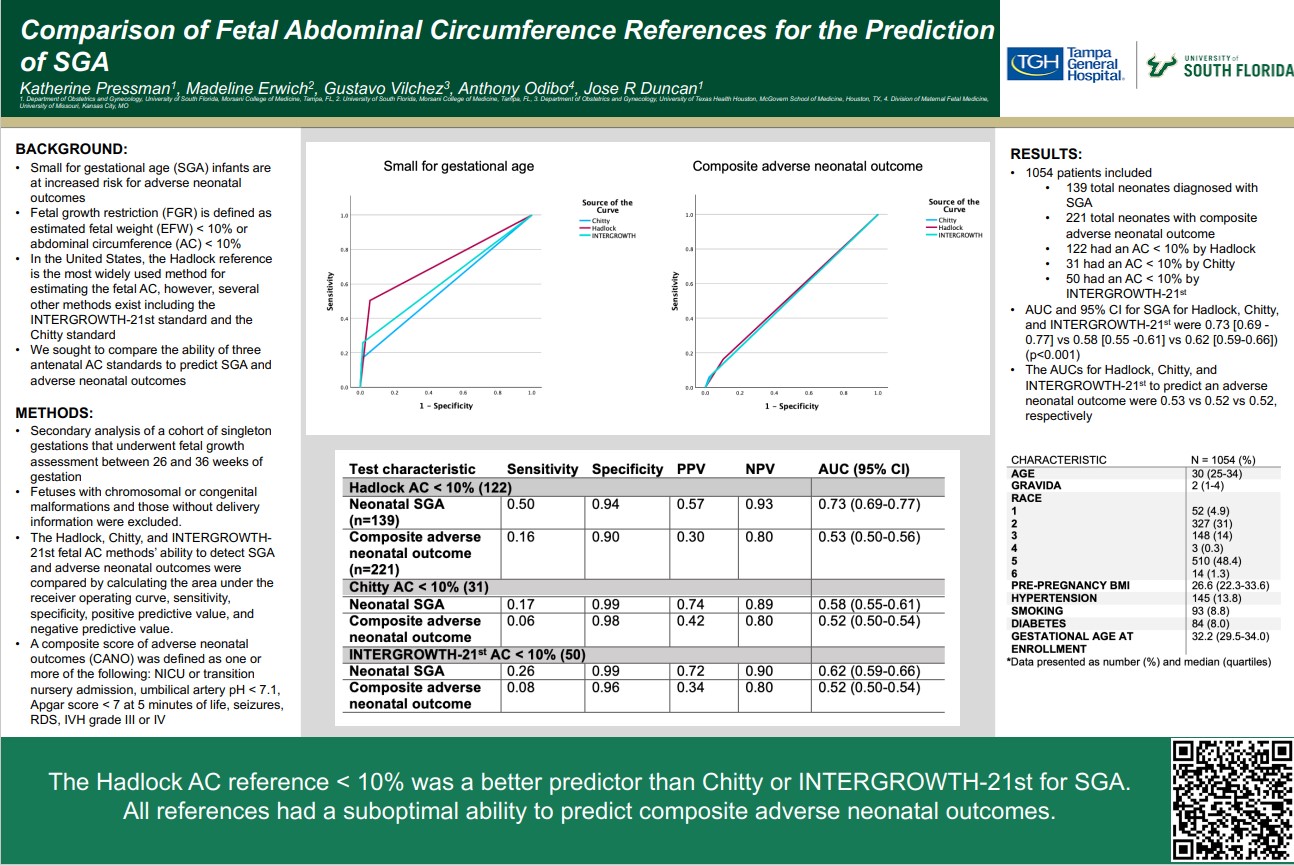
Comparison of Fetal Abdominal Circumference References for the Prediction of SGA
In the United States, the Hadlock reference is the most widely used method for estimating the fetal AC, however, several other methods exist including the INTERGROWTH-21st standard and the Chitty standard.
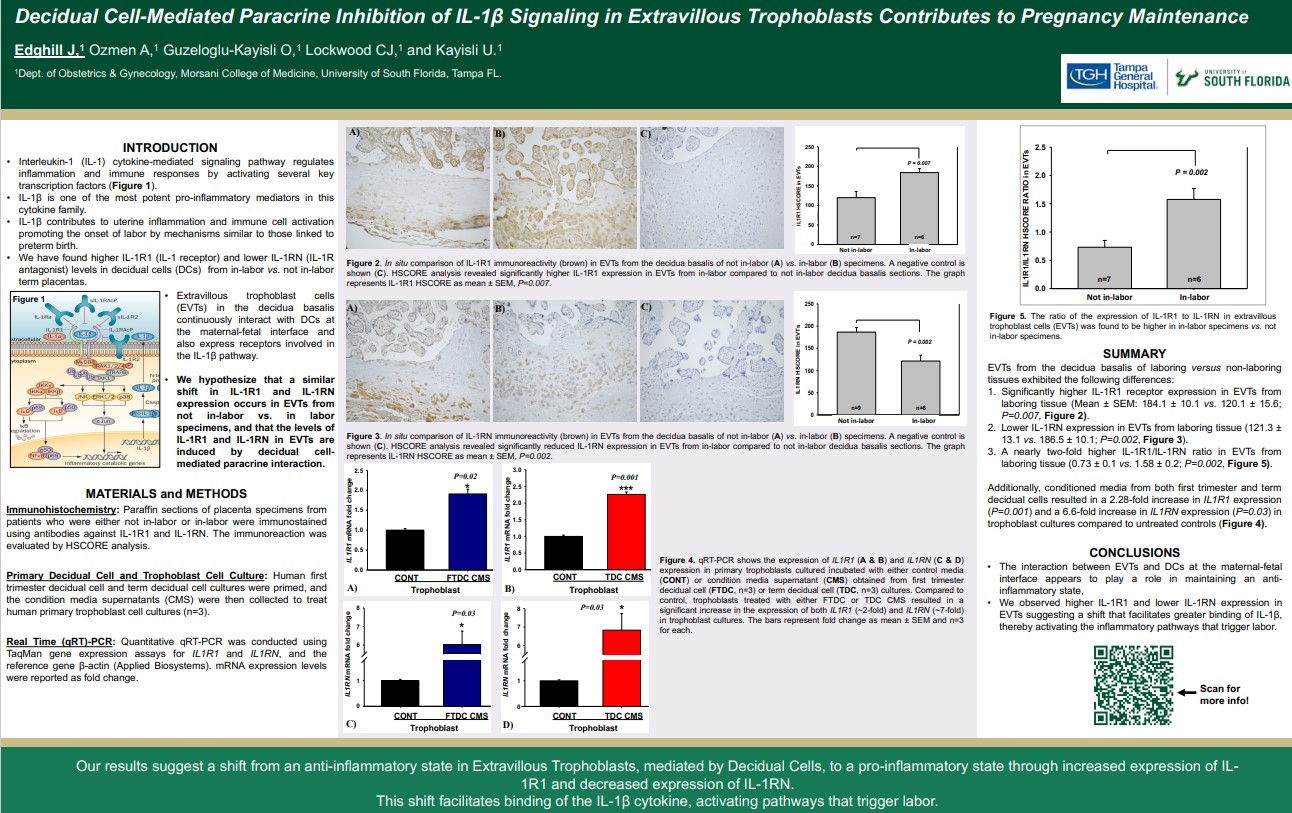
Decidual Cell-Mediated Paracrine Inhibition of IL-1β Signaling in Extravillous Trophoblasts Contributes to Pregnancy Maintenance
We hypothesize that a similar shift in IL-1R1 and IL-1RN expression occurs in EVTs from not in-labor vs. in labor specimens, and that the levels of IL-1R1 and IL-1RN in EVTs are induced by decidual cell mediated paracrine interaction.
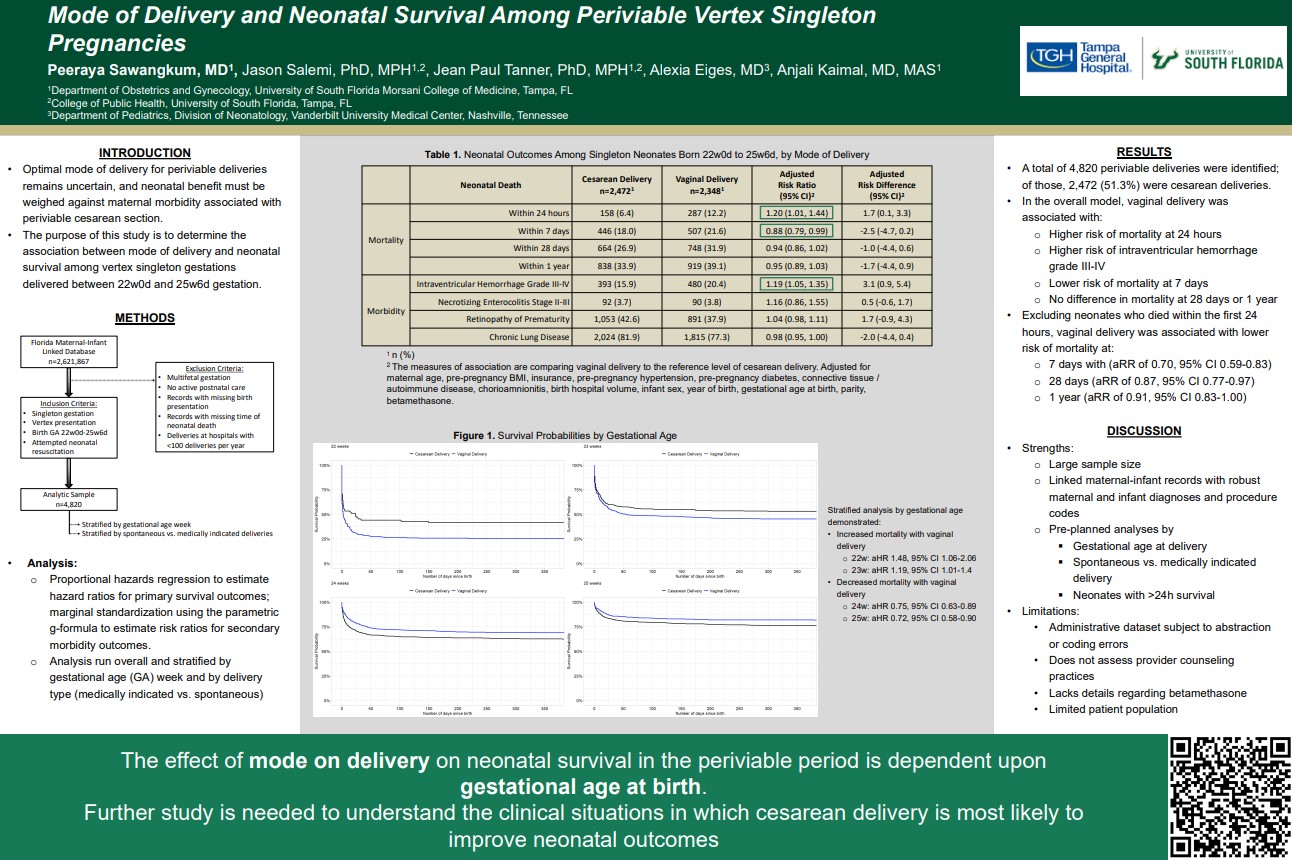
Mode of Delivery and Neonatal Survival Among Periviable Vertex Singleton Pregnancies
The purpose of this study is to determine the association between mode of delivery and neonatal survival among vertex singleton gestations delivered between 22w0d and 25w6d gestation.
2024 Presentations
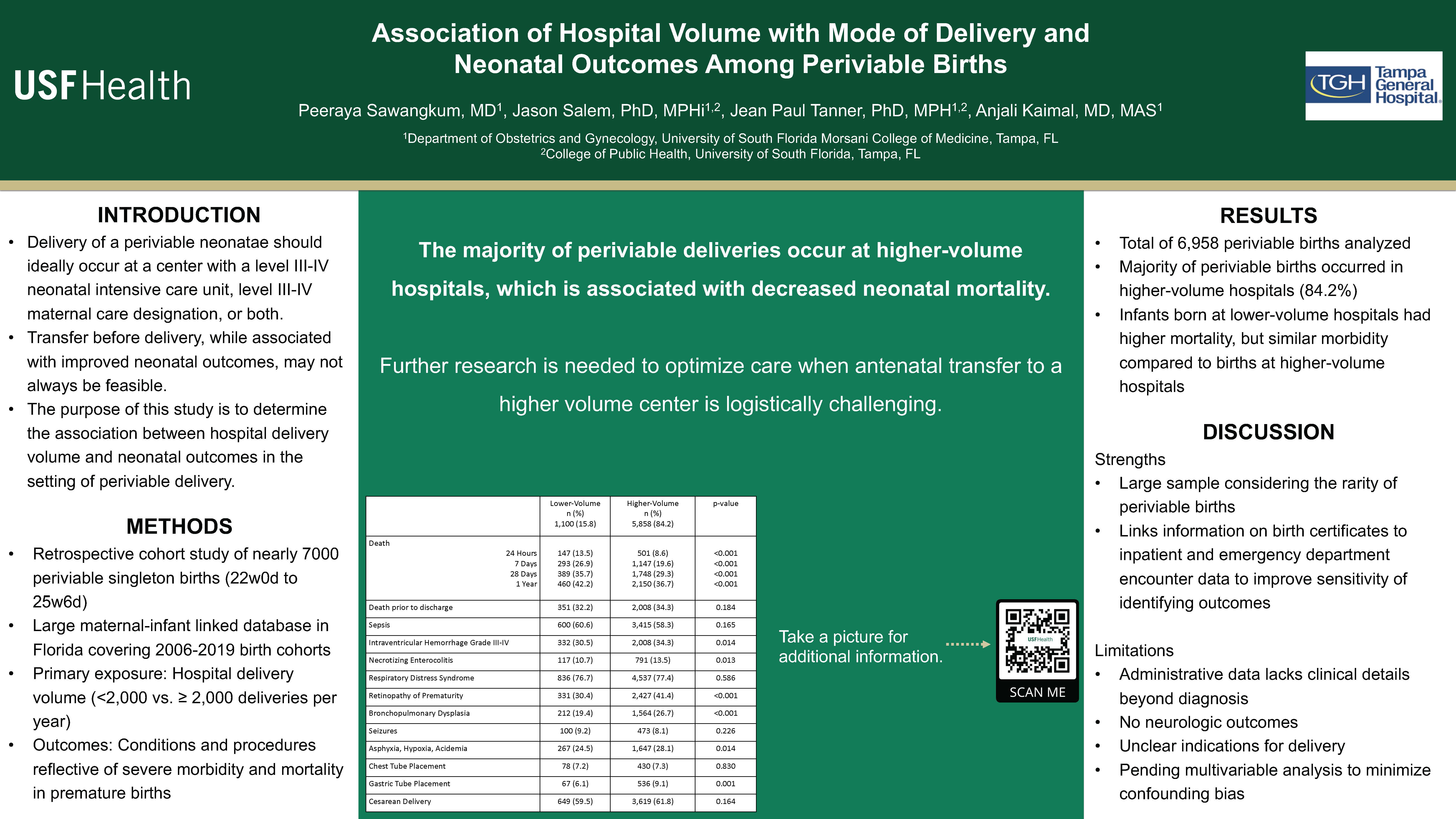
Hospital Volume with Periviable Outcomes

Mode of Delivery with Periviable Outcomes
2023 Presentations
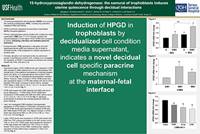
15-hydroxyprostaglandin dehydrogenase: the samurai of trophoblasts induces uterine quiescence through decidual interactions
15-hydroxyprostaglandin dehydrogenase (HPGD) is an enzyme that oxidizes prostaglandins(PGs), including key parturition mediators PGE2 and PGF2α.
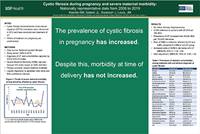
Cystic fibrosis during pregnancy and severe maternal morbidity
Introduction of transmembrane conductance regulator modulator therapy in 2012 revolutionized the treatment of cystic fibrosis (CF). These therapies are now used in pregnancy.
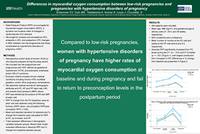
Differences in myocardial oxygen consumption between low-risk pregnancies and pregnancies with hypertensive disorders of pregnancy
Rate-Pressure Product (RPP) has been used in non-pregnant adults as a surrogate for myocardial oxygen consumption (MOC), a dynamic non-invasive index of changes in cardiovascular (CV) demand. We sought to compare pre-conceptional (PC), antepartum(AP), and postpartum (PP) changes in MOC between low-risk pregnancies and those complicated by hypertensive disorders of pregnancy (HDP).

Effects of galactopoieses on post-partum dyslipidemia among obese women
Dyslipidemia is a disorder of the lipoproteins which promotes development of atherosclerosis. Overtime, atherosclerosis can lead to cardiovascular disease. Cardiovascular disease is the leading cause of maternal death in the United States.
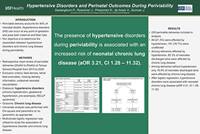
Hypertensive Disorders and Perinatal Outcomes During Periviability
The objective of this study is to determine the association between hypertensive disorders (HTNP) including chronic hypertension, gestational hypertension, pre-eclampsia with and without severe features, and HELLP syndrome and incidence of neonatal chronic lung disease.
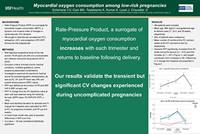
Mycardial oxygen consumption among low-risk pregnancies
Rate-Pressure Product (RPP) has been utilized in non-pregnant adults as a surrogate for myocardial oxygen consumption (MOC), a dynamic non-invasive index of changes in cardiovascular (CV) demand. We sought to describe pre-conceptional (PC), antepartum(AP), and postpartum (PP) RPP among low-risk pregnancies.
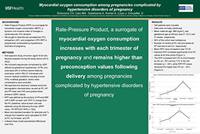
Myocardial oxygen consumption in pregnancies complicated by hypertensive disorders of pregnancy
Rate-Pressure Product (RPP) has been used as a surrogate for myocardial oxygen consumption (MOC), a dynamic non-invasive index of changes in cardiovascular (CV)demand. We sought to describe pre-conceptional (PC), antepartum (AP), and postpartum (PP) RPP among pregnancies complicated by hypertensive disorders of pregnancy (HDP).
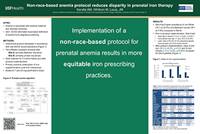
Non-race-based anemia protocol reduces disparity in prenatal iron replacement therapy
Anemia is associated with adverse maternal and neonatal outcomes. In 2021, the American College of Obstetricians and Gynecologists (ACOG) eliminated race-based definitions of anemia from screening recommendations. We aimed to assess how a non-race-based anemia protocol reduces disparities between patients receiving care at two different prenatal sites.
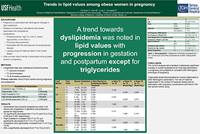
Trends in lipid values among obese women in pregnancy
Pregnancy is associated with atherogenic changes in lipid metabolism. Obesity is increasing in prevalence and closely associated with dyslipidemia characterized by high TC, LDL-C, and/or triglycerides, or low HDL-C.